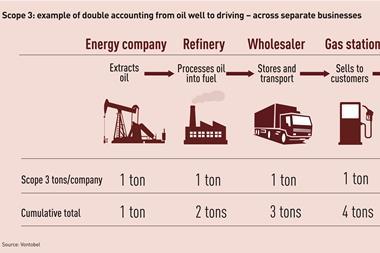The Institutional Investors Group on Climate Change (IIGCC) has finalised guidance for investors on addressing Scope 3 emissions in investments, going ahead with previously indicated suggestions that investors proceed by checking their portfolios’ exposure to key “hotspots”.
These include certain categories of value chain emissions linked to the energy sector, industrials and materials, banking, consumer products and services, and food producers.
Building on a discussion paper from earlier this year, the IIGCC guidance says that an asset’s value chain emissions – such as from the use of a company’s products – are material to the mitigation of financial risks associated with climate change and should be taken into consideration by investors despite challenges in doing so.
“Reflecting data constraints and sizeable differences in materiality, we recommend a sector and category-specific approach to incorporating scope 3, that is focused on high impact sectors,” the guidance states.
Scope 3 emissions have become one of the most controversial areas of sustainable finance in recent times. Challenges include data quality and coverage, methodological inconsistencies, and the risk of unintended consequences, such as reducing allocations to companies that could actually be more aligned with sustainability goals than a peer despite having a higher Scope 3 emissions footprint.
The chief responsible investment officer of Brunel Pension Partnership, Faith Ward, and others, have warned that investors needed to view Scope 3 data in context if it is to be useful or helpful for asset allocation and engagement.
Swedish pension fund AP4 is working on a project to incorporate Scope 3 emissions into its asset allocation decisions and told IPE that the work has raised portfolio construction questions, such as about its ability to invest in the finance sector.
In its guidance, IIGCC says that the sector and specific Scope 3 category combinations it identified as where value chain emissions are concentrated are a starting point for investors but they are not a “one-size-fits-all” list.
Investors should develop a bespoke strategy to approaching Scope 3 emissions in the context of what is material to their individual portfiolios and this should be communicated transparently.
They should continue to seek to address data gaps and be cautious about aggregating Scope 3 at the portfolio level as using a total portfolio emissions figure that includes Scope 3 “is inconsistent with mitigating climate change, and its associated financial risks, in the real economy”.
The latest digital edition of IPE’s magazine is now available








































No comments yet